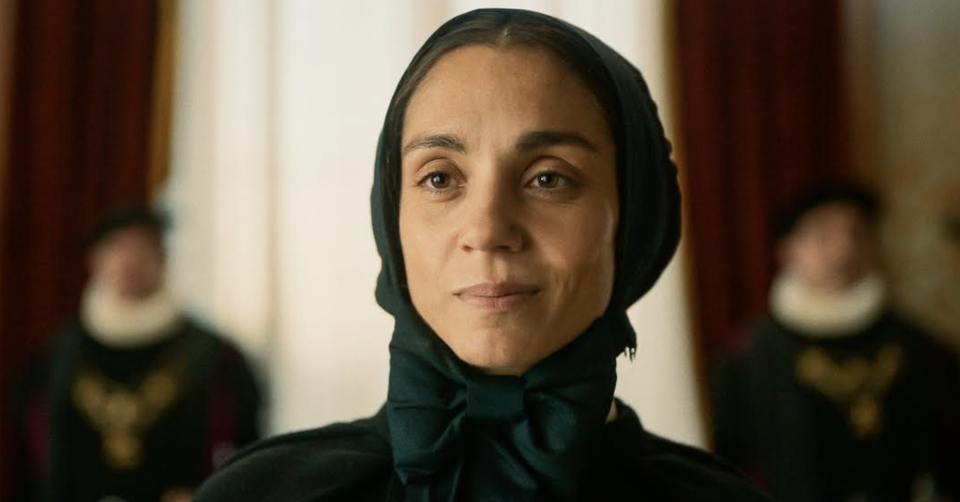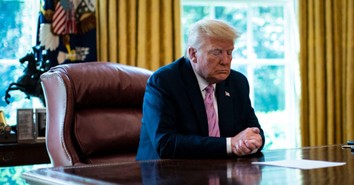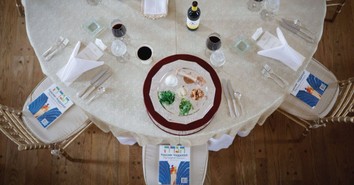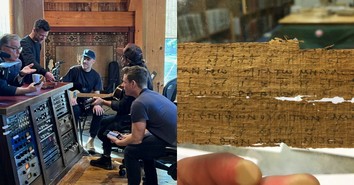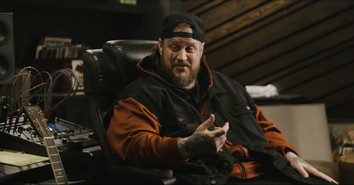Mother Cabrini is a young Italian woman with a heart for the world's poor and a bold plan to meet their needs.
Her plan: launch a ministry in Asia, where -- she says -- poverty is ripping through the continent rapidly and the poor are in desperate need of food, housing, and medicine. She wants to launch a series of orphanages. First, though, she needs the approval of the Vatican, which she has written a dozen times. Finally, she gets a much-desired meeting with the Pope.
"For one little woman, you make a lot of noise," he says.
He approves her mission with one caveat: It must begin in the United States, where more than 1 million Italians have immigrated and are in need of assistance. They're battling not only poverty but racism, too. She agrees to go.
"From now on, my sisters, we speak English," she tells her fellow nuns.
The film Cabrini (PG-13) follows the story of Mother Cabrini, who enters the U.S. through Ellis Island -- sailing by the Statue of Liberty -- and sets out to change the world. Angel Studios (Sound of Freedom) is distributing it.
Here are four things you should know about the film:
Photo credit: ©AngelStudios; used with permission.
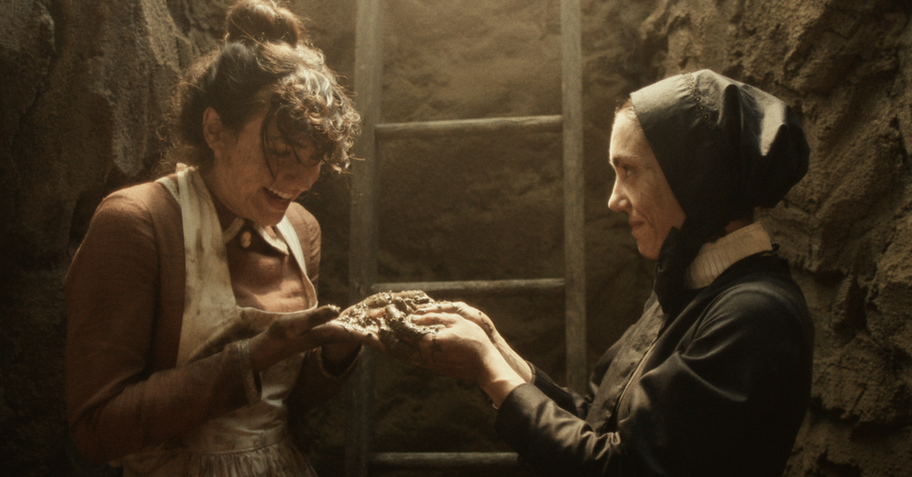
1. It's Based on the Story of a Real-Life Hero
The entertainment world is filled with mythical superheroes. Frances Cabrini, though, was a real-life one. Born July 15, 1850, near Milan, Italy, she and seven other women launched a ministry for the poor in 1880, after which she obtained an audience with Pope Leo XIII in the hopes of being commissioned for a mission to China. The Pope, though, sent her to the United States. In New York, she launched orphanages, schools, and a hospital. Soon, she received requests from all over the world.
As the film tells us, she launched an "empire of hope," founding hundreds of hospitals, orphanages, schools, and aid centers worldwide. "It was the largest charitable empire the world had ever known," the film says.
Cabrini was Catholic, but she lived a life that has lessons for all of us -- Catholic and non-Catholic alike.
Photo credit: ©AngelStudios; used with permission.
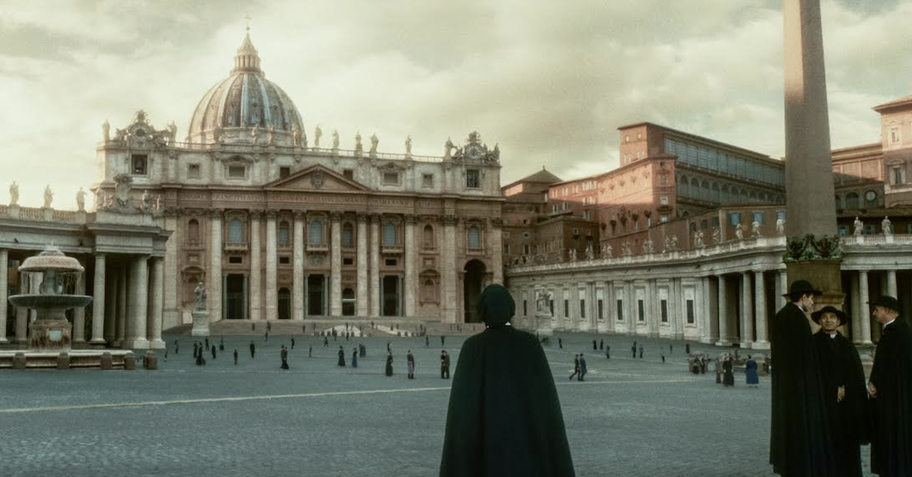
2. It Had a Big Budget, and Looks Like it on the Big Screen
From the opening scene, you realize this isn't your typical faith film with a modest budget.
Every costume appears as if it was teleported from another era. Every building does, too. The scenes of 1900s New York City -- the rat-filled alleys and the smog-filled skylines -- set the mood. The excellent cast carries it from there.
The film's budget -- $50 million, according to The Philadelphia Inquirer -- is a far cry from a Marvel or Star Wars movie but is light years beyond what most faith-based movies get. Businessman J. Eustace Wolfington helped organize the funding. He previously was a producer on Bella (2006) and Sound of Freedom (2023).
Emmy-nominee David Morse (The Green Mile, The Hurt Locker), who portrays Archbishop Michael Corrigan in the film, said he was amazed by the "world" the filmmakers created.
"I have so much gratitude and admiration" for Wolfington, Morse told Crosswalk. "[He] said, 'If I'm going to do this, we're going to do it right, and we're going to spend money.' And when you watch the movie, you see it. For an independent movie, it's almost unheard of.… It's truly spectacular."
Oscar-nominee John Lithgow (The Crown) portrays New York's mayor, while Cristiana Dell'Anna (Toscana) plays Cabrini.
Photo credit: ©AngelStudios; used with permission.
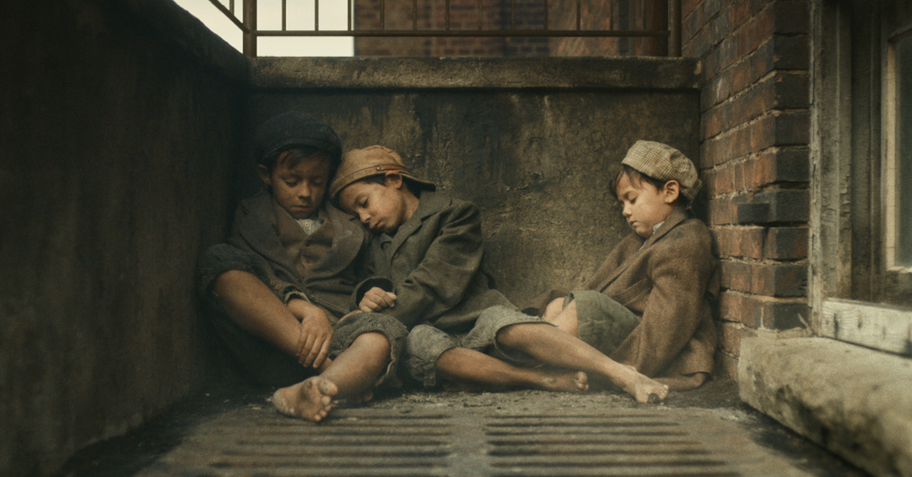
3. It Urges Us to Live Like Christ
It's easy to be inspired by Mother Cabrini's story. She sees a prostitute on the streets of New York and takes her in. She finds a young boy in the filthy alleys and urges him to take shelter in her orphanage. She hears racial slurs and hate-filled comments -- "We oughta ship them all back," one man says in earshot -- and yet she turns the other cheek, opting not to respond. When the orphanage reaches maximum capacity, she raises funds to build a new one. When she learns immigrants often lack health care, she raises funds to build a hospital. When she learns she has tuberculosis and has only a few years to live, she marches on.
"You will have plenty of time to rest in Heaven," she tells the archbishop. Her goal was to see the world as Jesus saw it.
"Her life was like the ultimate prayer," director Alejandro Monteverde told Crosswalk. "She did not care about what people believed. She cared about the human being."
Cabrini's life, he added, teaches us to "love more, judge less."
Photo credit: ©AngelStudios; used with permission.
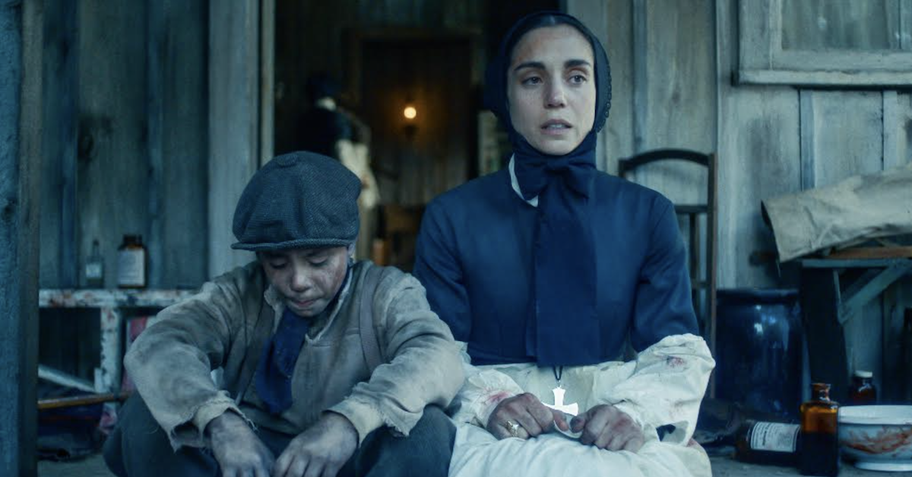
4. It's Angel Studios' Best Movie Yet
Angel Studios is best known as the studio that distributed the 2023 blockbuster Sound of Freedom, although it's had a string of other solid films, too, including His Only Son, After Death, and The Shift.
Cabrini is the best Angel movie yet, partially due to the masterful directing of Monteverde, whose first two films -- 2006's Bella and 2015's Little Boy -- stood out for their excellence and emotional impact, much like Sound of Freedom. Angel cofounder Jordan Harmon compares Monteverde to Frank Capra (1897-1991), the filmmaker who directed It's a Wonderful Life, and Mr. Smith Goes to Washington.
Cabrini's personal story, though, anchors the film. She overcame sexism with determination and hard work. She overcame racism with forgiveness and love. More than likely, most moviegoers have never heard of her. A new film is changing that.
Rated PG-13 for thematic material, some violence, language, and smoking. Language details: h-ll (3), w--re (1), SOB (1). Some of the language is seen in subtitles.
Entertainment rating: 5 out of 5 stars.
Family-friendly rating: 4 out of 5 stars.
Photo credit:
Originally published March 08, 2024.
